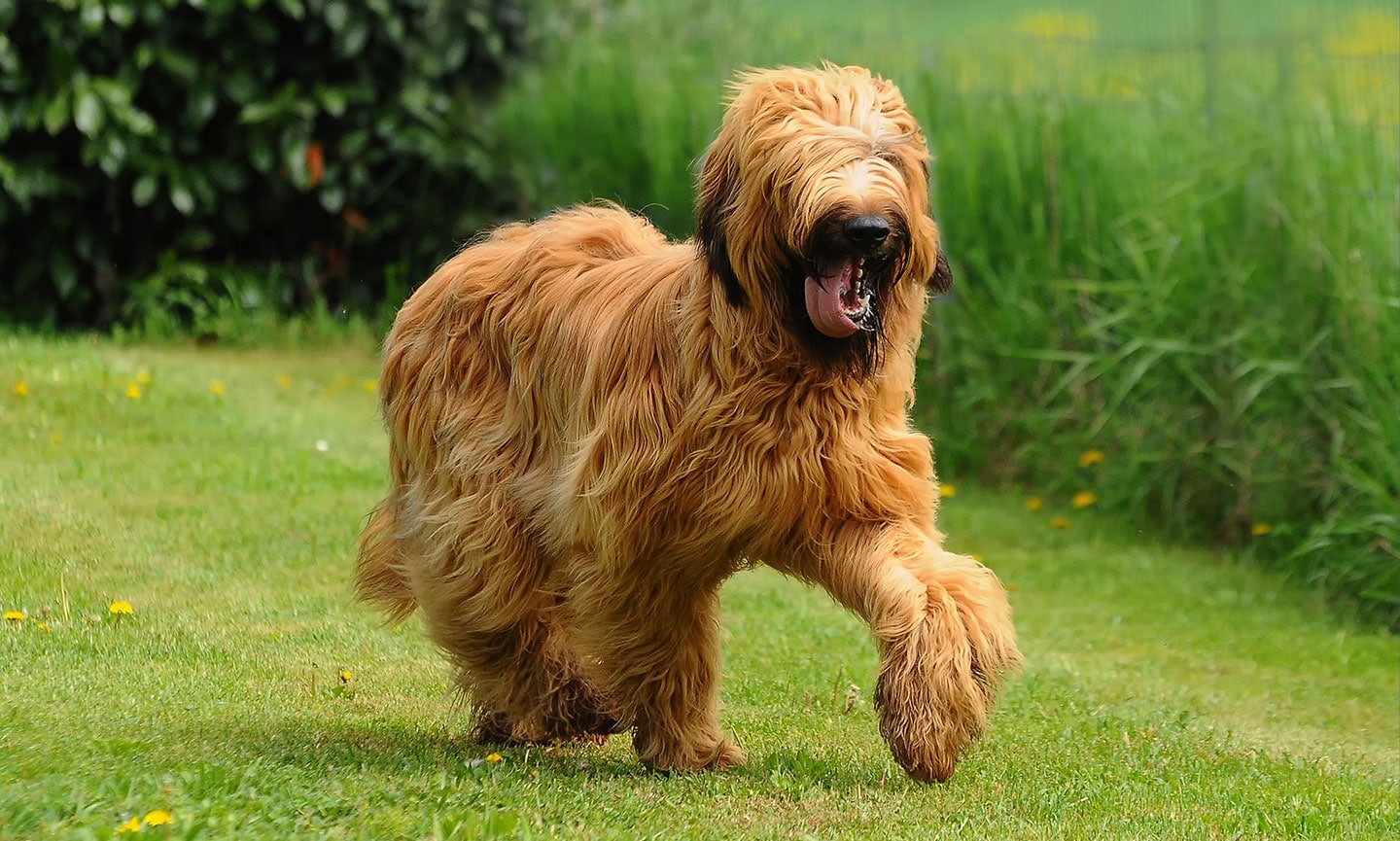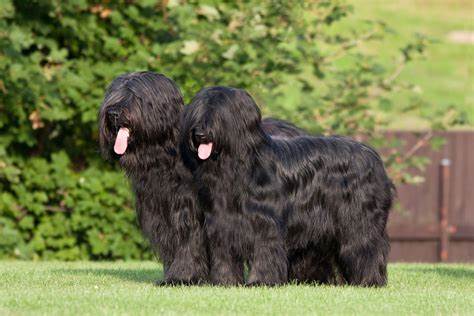
The Briard, also known as the Berger de Brie, is an ancient French herding breed with origins dating back to at least the 8th century. The breed was originally developed to serve as a livestock guardian and herding dog, helping farmers protect their flocks from predators and drive them through rugged terrain.
During the French Revolution and Napoleonic Wars, Briards were also used as messenger dogs, sentries, and ambulance dogs due to their intelligence and loyalty. The breed gained prominence when Thomas Jefferson brought several Briards to the United States, further establishing them as versatile working dogs.
Recognized by the American Kennel Club (AKC) in 1928, the Briard remains popular in France and the U.S., valued for its bravery, intelligence, and affectionate nature.
While not as common as other herding breeds like the Border Collie or Australian Shepherd, the Briard has a devoted following among farmers, dog trainers, and families who appreciate its versatility and loyalty.
The breed is particularly known for its strong work ethic, deep protective instincts, and affectionate personality, making it an excellent choice for those seeking both a guardian and companion.
The Briard is a large, powerful, and muscular dog with a distinctive long, wavy coat and expressive face.
• Coat: The long, coarse, wavy double coat is water-resistant and comes in black, fawn, gray, or tawny shades.
• Size: Males stand 23 to 27 inches tall and weigh 65 to 100 pounds. Females are slightly smaller.
• Head & Expression: The breed has a broad head with a long, square-shaped muzzle, topped with high-set, naturally floppy or cropped ears.
• Ears: Naturally drop ears covered in fur, though cropping is sometimes done in certain countries.
• Body: A solid, well-proportioned build, deep chest, and a distinctive long tail with a slight curve at the tip.
The Briard is known for its intelligence, protective instincts, and affectionate temperament, making it an excellent herding dog and family guardian.
• Loyal and Protective: The Briard is deeply devoted to its family and acts as a natural watchdog.
• Intelligent and Trainable: Quick learners with strong problem-solving abilities, excelling in obedience, agility, and search-and-rescue.
• Energetic and Playful: Requires daily exercise and mental stimulation to stay happy and well-behaved.
• Affectionate and Loving: Despite its size, the Briard is gentle with family members, forming close bonds.
• Independent but Social: Can be reserved with strangers but thrives in an interactive and social environment.

For those seeking a loyal, intelligent, and protective dog, the Briard is an outstanding choice.
• Excellent Guard Dog: Naturally protective and alert, making it a great family protector.
• Highly Trainable and Intelligent: Excels in obedience, herding, and search-and-rescue work.
• Loving and Affectionate: Forms strong bonds with family and enjoys companionship.
• Adaptable to Active Lifestyles: Thrives in homes that provide ample exercise and training.
• Unique Appearance: The Briard’s flowing coat and expressive eyes give it a distinct and beautiful look.
The Briard requires consistent grooming, exercise, and socialization to remain healthy and well-behaved.
• Grooming: The long, wavy coat requires brushing 3-4 times a week to prevent matting and tangles.
• Exercise: Needs at least an hour of exercise daily, including walks, running, and playtime.
• Mental Stimulation: Thrives on obedience training, puzzle toys, and interactive games.
• Nutrition: A high-quality diet rich in protein supports its active lifestyle.
• Training and Socialization: Early training ensures a well-adjusted and confident temperament.
Briards are generally healthy dogs, but they are prone to certain genetic conditions.
• Hip Dysplasia: Common in large breeds, affecting mobility.
• Progressive Retinal Atrophy (PRA): A hereditary eye disorder leading to blindness.
• Gastric Dilatation-Volvulus (Bloat): A serious condition in deep-chested breeds; feeding smaller meals helps reduce risk.
• Ear Infections: Regular ear cleaning is necessary due to long, floppy ears.
• Hypothyroidism: Some Briards may develop thyroid-related issues.

Compared to the German Shepherd, the Briard is less intense and more independent, but equally protective. Compared to the Belgian Malinois, the Briard is less hyperactive and better suited for families.
Unlike the Poodle, which also has a long coat, the Briard’s fur requires more maintenance but offers excellent weather resistance.
The Briard is perfect for families, farm owners, and those seeking a protective yet affectionate companion. If you have the time for training, exercise, and grooming, this breed will be a loyal and loving addition to your home.
However, if you prefer a low-maintenance or independent breed, or do not have time for socialization and training, the Briard may not be the best fit.
United Pet Club is here to help you find the perfect Briard companion. Whether you're looking to adopt or connect with trusted breeders, we provide valuable resources to guide you every step of the way.
Explore our platform to learn more about Briards, their history, and how to care for them. Contact United Pet Club today to start your journey with this loyal and intelligent French sheepdog!